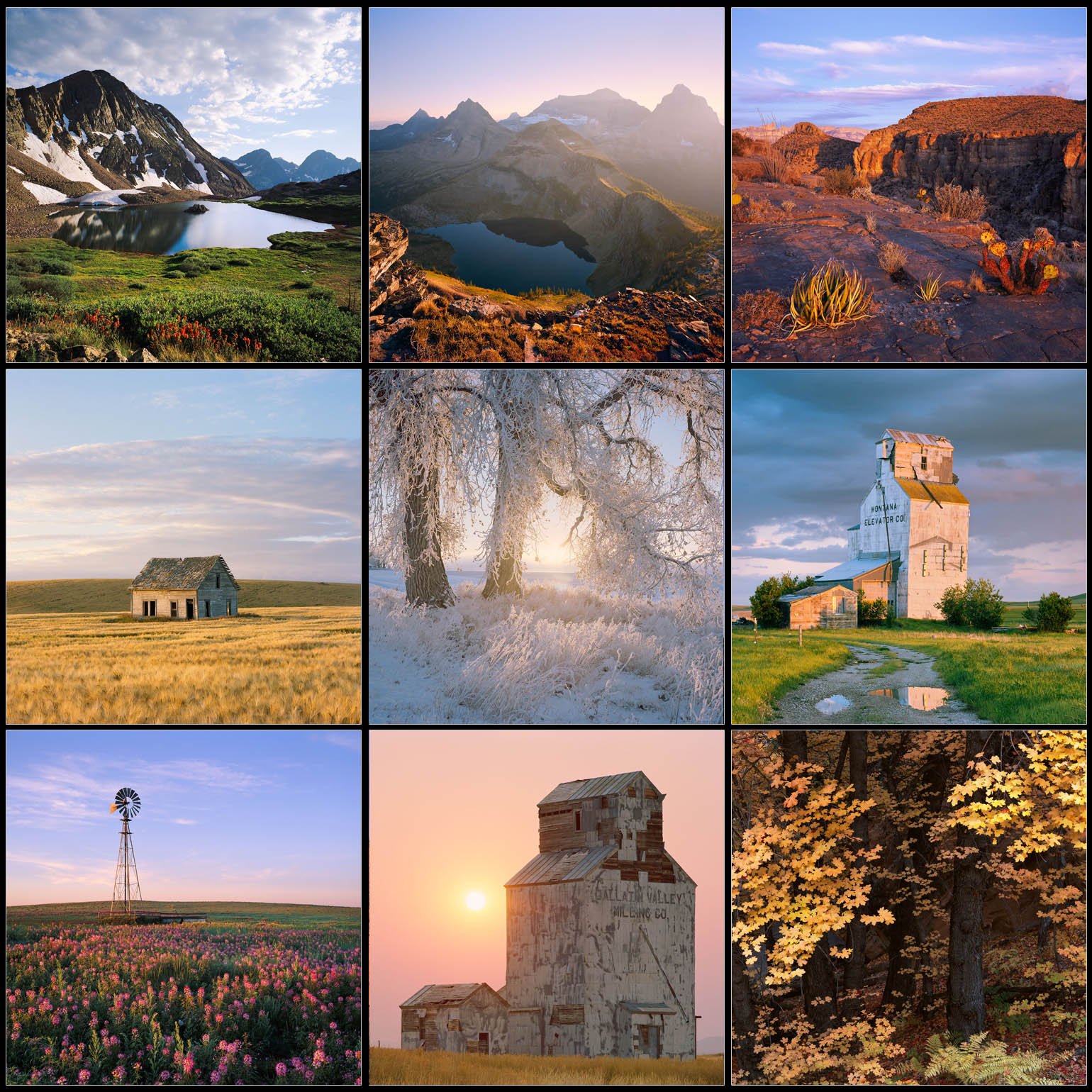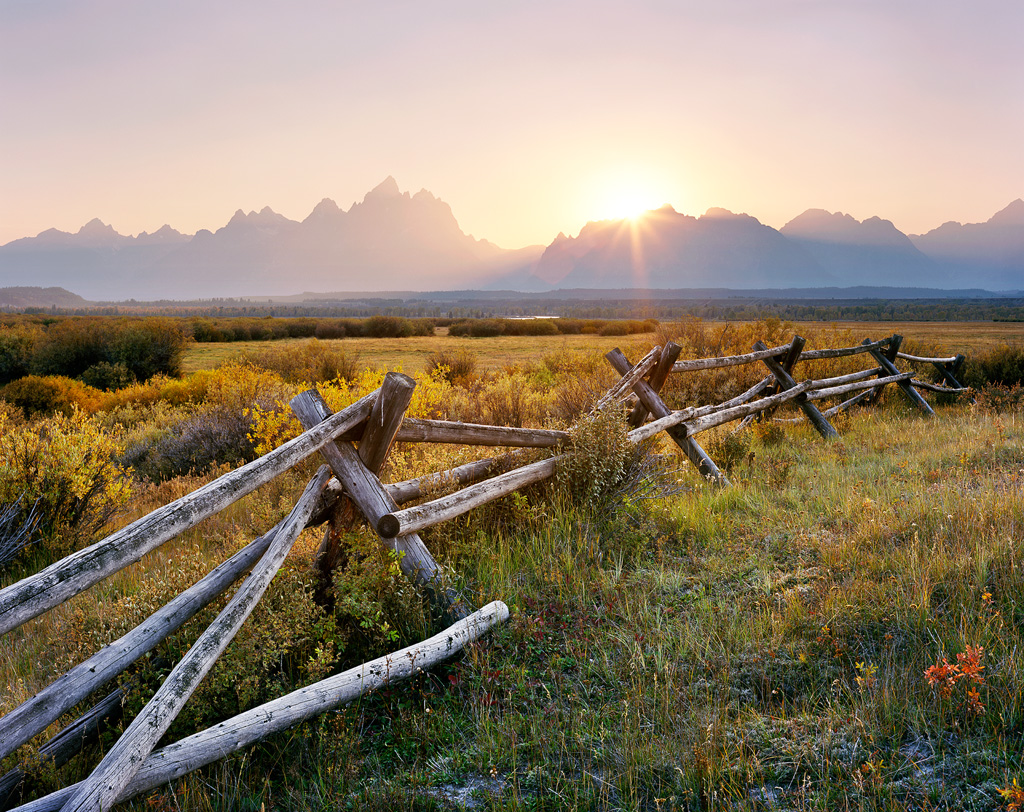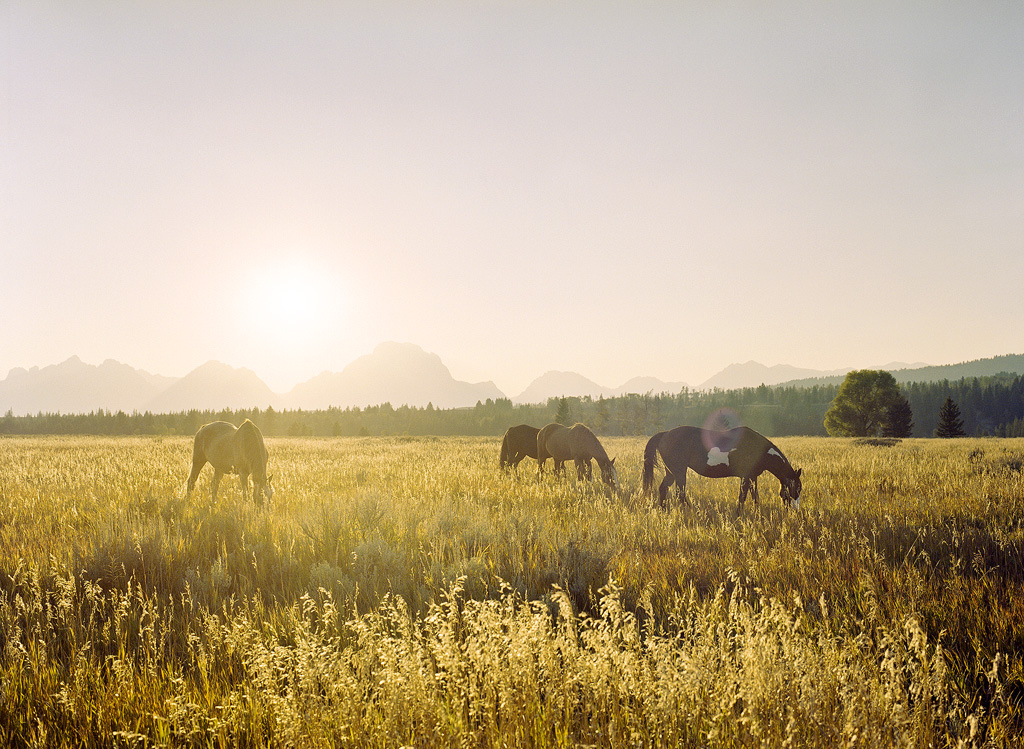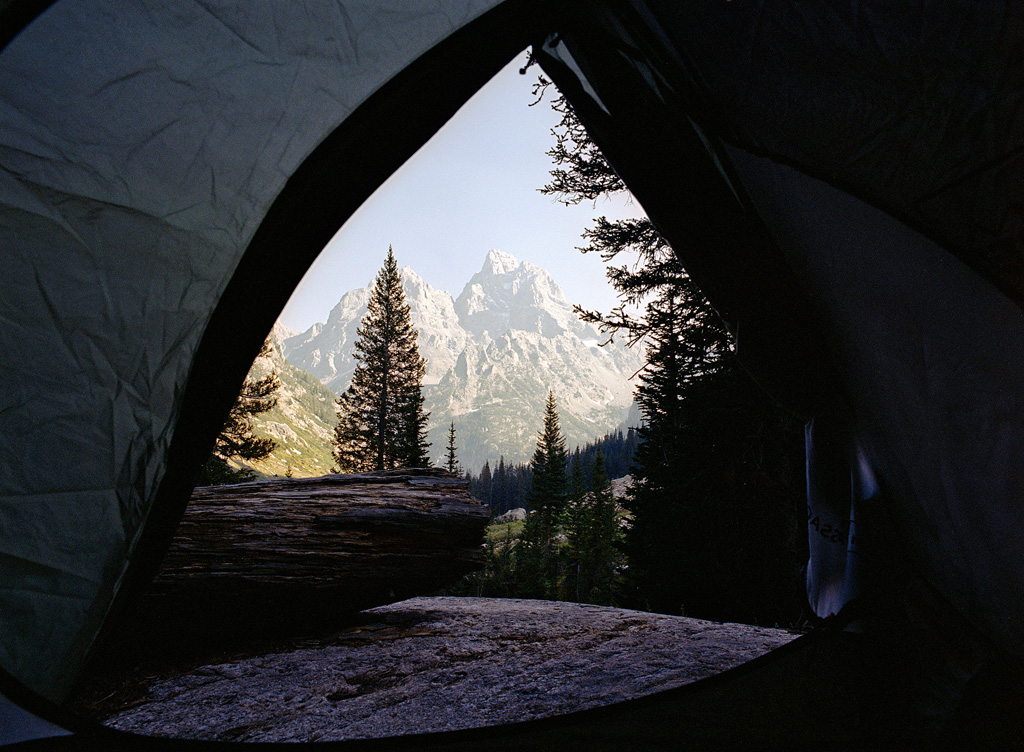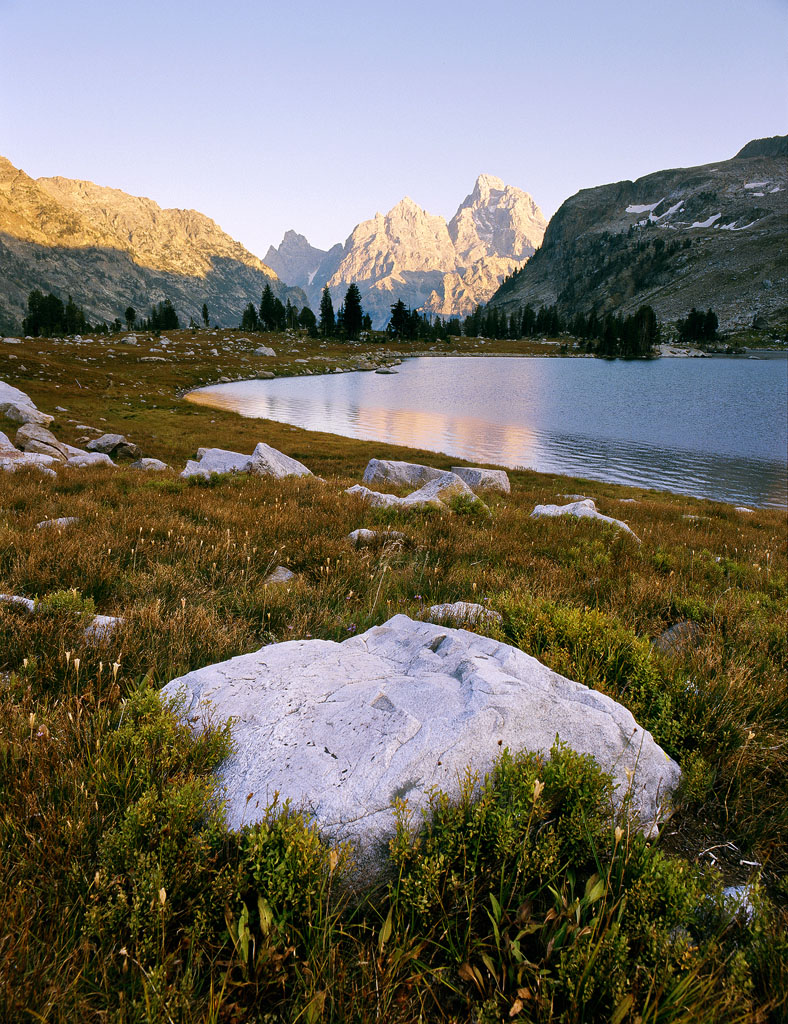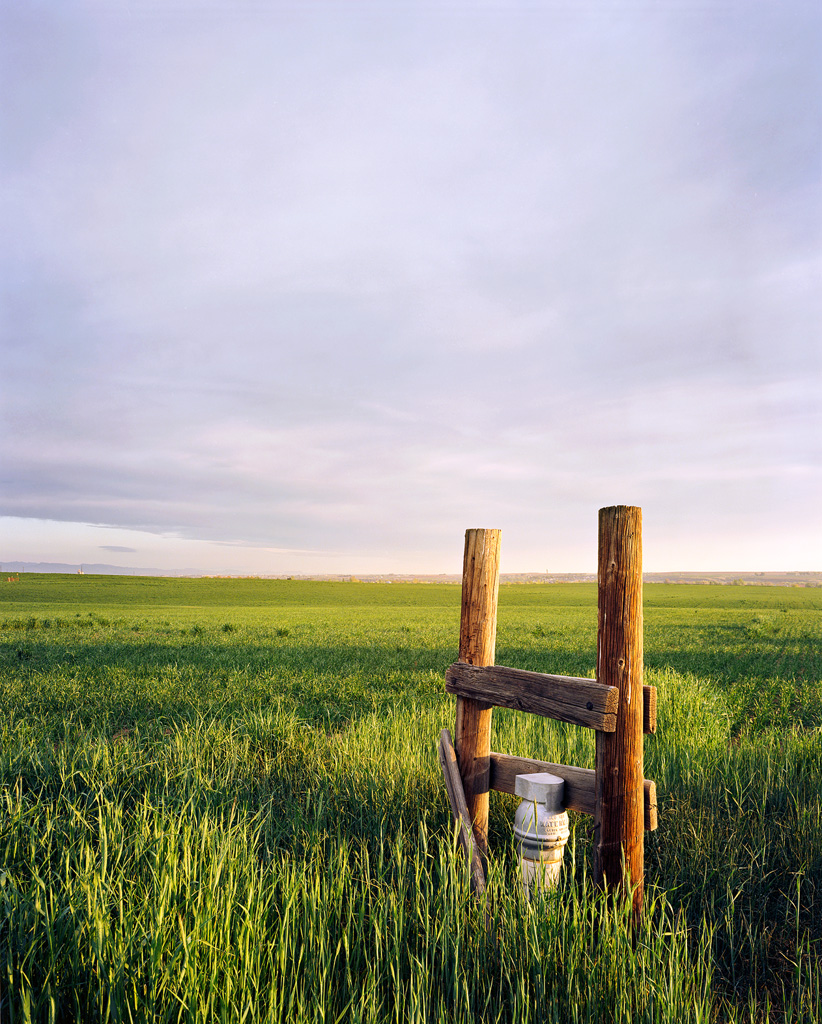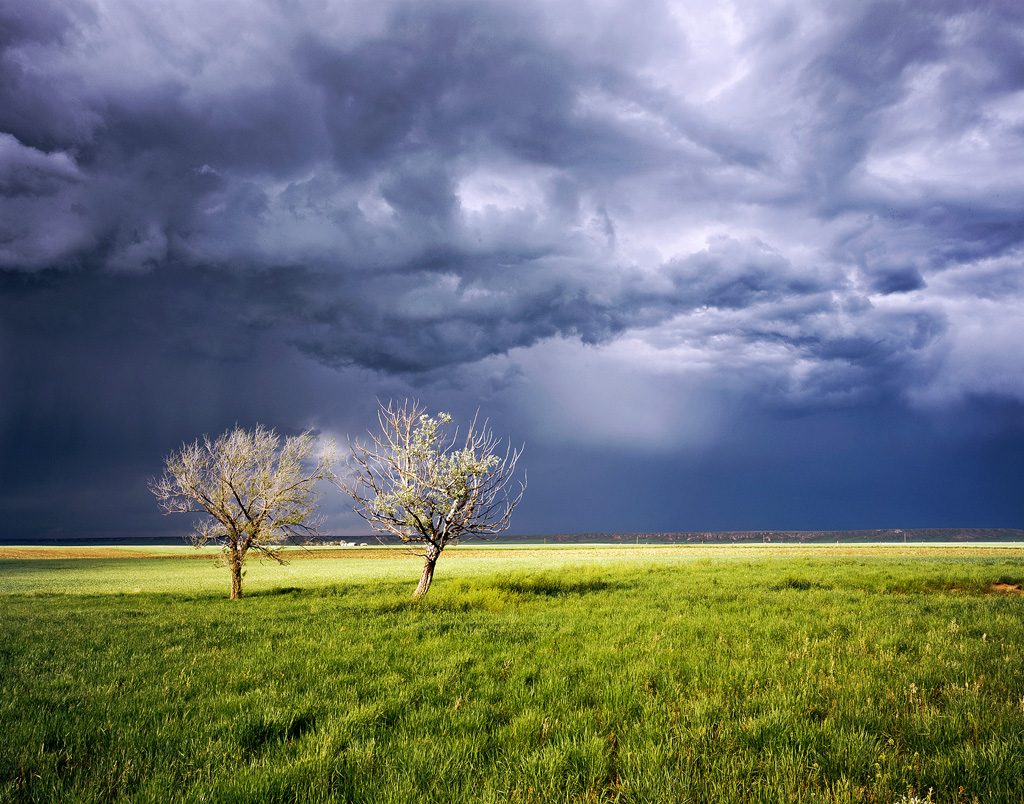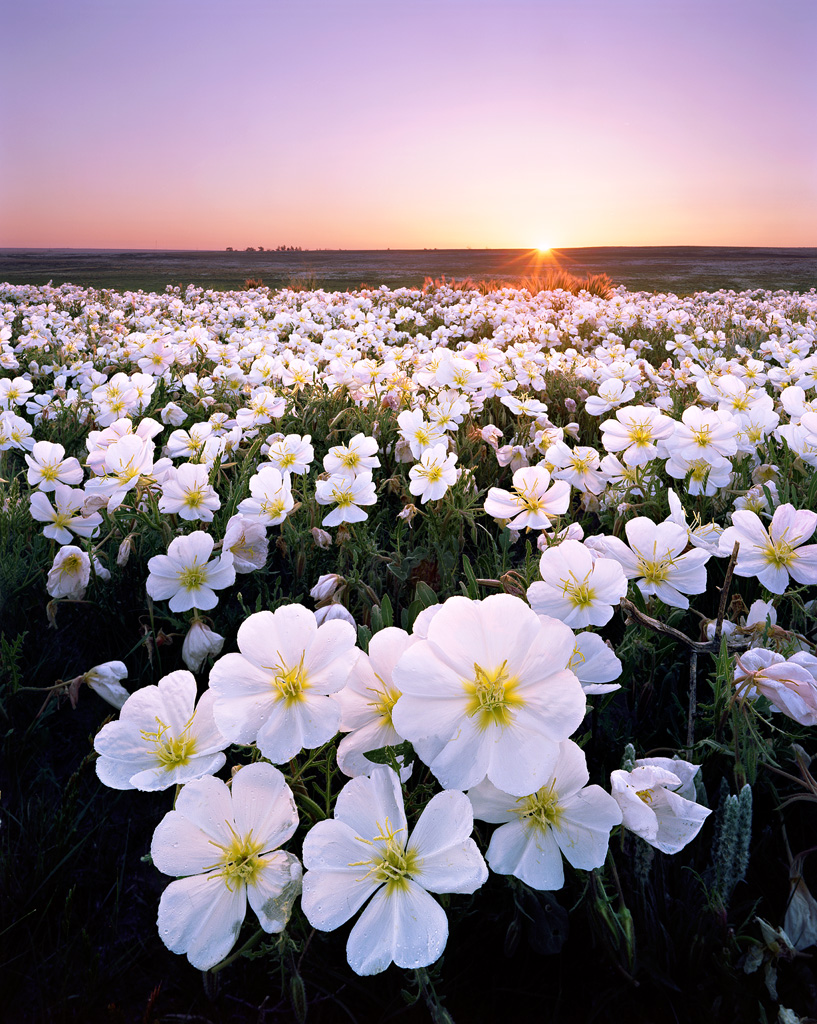Back in February and March I escaped the winter of Colorado and took a trip to New Zealand, rebooting an itinerary that had to be canceled back in March of 2020 for reasons we’re all too familiar with. My plan was to just visit the South Island as the mountains and glaciers were my biggest interest, so I booked a flight and a tiny one-person camper van for about 20 days. I also knew that I wanted to use 4x5 film as it's the system I’m most familiar with and the results always please me more than medium format film, though I will admit that the smaller roll film is much easier to travel with. This trip was an absolute blast with stunning scenery, wonderful people, and a very easy travel experience. For this article I want to talk a bit about how I got there with my large format film, and what it was like to wander around the island for a few weeks with the goal of getting as much photography time in as possible…
Read moreThe Best of 2024
At the end of the year, I always like to look back on what I’ve accomplished and where I’ve been. It’s actually quite helpful to put together these retrospective blog posts to remember that there was typically more adventure and photos to show for it than I knew about. I get to refresh my warm memories of a winter desert trip or time spent on a Hawaiian beach many months ago, and take another look at the photographs to find my favorites. The process also became a reminder that many of my early summer images were left on the backburner as I took an epic 6 week road trip up to the Yukon. Writing this article helped me dig up a few that were missed in the chaos of travel. ..
Read moreMaximum Print Size For Film Scans
It’s time to cover another frequent question that I get: How large can I print from a film scan? This question is most often asked by those who are curious about having me drum scan their film, but it also comes from many folks who are just asking about scanning in general. It is most often phrased as such, “How big can I print from a drum scan of 35mm film?” Today I want to explain how complicated that seemingly straightforward question is, and what factors come into play when considering the print sizes possible from different film formats…
Read moreThe Best of 2023
Another year in the books! It’s time for my annual post where I share some favorites from the last 12 months and look back on what the year was like. While it didn’t hold the level of adventure that 2022 did (it’s hard to top a road trip to Alaska!), I still got out for some backpacking trips in the mountains and time spent in the desert and prairie. Spring this year was wet and incredibly green on the Great Plains, which made for excellent photography before the mountains melted out. Once the passes were snow free…
Read morePhotographing the Lunar Eclipse on Large Format Film
While I’ve always enjoyed seeing the moon turn red during an eclipse, I’ve honestly never made any attempt to capture it in an image. This time I decided to try something out, but I also wanted the image to appear like my own, something that would work with my personal style. The prairie was an obvious choice and I knew of a homestead that faced in the correct direction to make it work. Seeing how I shoot on film, I also wanted to get it right on just one sheet and not a composite. A multiple-exposure image of the eclipse progressing across the sky would be perfect for this spot…
Read moreFocus Scales for Large Format Cameras
Have you ever wanted to be a little more precise with focus when using a view camera? Where exactly should we set the focus and what aperture should we use to ensure a full depth of field with everything sharp from near to far? Raise your hand if you’ve ever used the method “just focus on something and stop down to f32.” It’s ok, I’m guilty of taking that approach myself. It works more often than we’d like to admit. But wouldn’t it be nice to know with 100% certainty that you nailed the focus and used the correct aperture?…
Read moreUsing Wide Angle Lenses on 4x5 Film
When first making the leap into the world of large format, it’s pretty common to start off with a lens somewhere around 135mm or 150mm. It’s a great and affordable standard focal length to get your toes wet in the format, I still use a 135mm all the time because it’s just so natural. However, almost everyone will find themselves wanting more than one lens at some point. If your tastes take you into the world of portraits or closeup nature, chances are you’ll want something longer. If grand scenic landscapes are your calling then you’ll inevitably desire something wide….
Read more4x5 Lenses - Choosing the Best Focal Length
Whether you’re just starting out with large format photography or looking for the next lens to expand your shooting style, choosing the proper focal length for the scene makes a big difference. What I’ve noticed with 4x5 is that unlike smaller formats, it’s a lot harder to pick out what focal length a photographer used when taking an image. When viewing an image shot on a DSLR of a flower bush pressed close to the lens and a grand mountain scene in the background, it’s often easy to tell that an extreme wide-angle lens was used. This becomes a little more difficult to pick out when a wide angle lens is 75mm compared to 24mm and distortion almost unnoticeable. This has led to a lot of people asking me “what focal length did you use for this image?”…
Read moreFlying with 4x5 Film - Hand Check Labels
This is just going to be a quick one! As many of you may know, new CT scanners are being installed in airports around the world at a rapid pace. These new scanners are being used to inspect carry on baggage and Kodak has reported that only one pass through the scanner will destroy your film. For decades it has been the recommendation to simply let your film go through the carry on X rays, but that is no longer the case….
Read morePushing the Dynamic Range of Color Negative Film
“Sunflower Sunset” - Backlit scenes are no trouble with color negative film. A filter was left off for this image to avoid flare troubles with the sun. The foreground (also the important part) was average metered and the sky ignored when taking the meter reading. Ektar 100 4x5, 210mm lens, 2 seconds at f45, no filters.
Color negative film has increasingly become a larger part of my workflow over the last several years and with good reason: the flexibility of the stuff is just phenomenal. It can be used to capture all the delicate subtleties of a low contrast scene as well as landscape scenes with intense dynamic range. If you don’t know what you will be getting into when you head out for a shoot it’s an excellent choice because it can handle anything you throw at it, but that doesn’t mean it can’t be used for a specific purpose or aesthetic either. Color negatives are the film type that I get the most questions about, mostly because people see such a wide variety of looks coming out of the same film types…
Read moreMetering and Shooting Kodak Portra Film
If you’ve been following me for a while - especially my recent work - you’ve probably noticed that I’ve got a passion for Portra. This film can have such a unique color palette that is flattering for many types of subjects and light conditions, but it’s also one of the films that I’ve gotten the most questions about when it comes to metering and shooting…
Read moreUsing a Large Format Camera in the Dark
If you’ve browsed through my images, chances are you’ve noticed that I’m a big fan of twilight and early morning light; the soft warm glow on the landscape is just sublime. Shooting in twilight comes with its own set of challenges, but those are greatly increased when trying to use a large format view camera. I’m going to share some tips that can help you out when the light is fading fast, or when you arrived well before sunrise and don’t want to miss the morning glow because you can’t see anything…
Read moreGND Filters - Getting the Perfect Exposure in One Shot
It’s time for me to answer another set of frequently asked questions, one that I get almost weekly so I need to make a blog post about it. Do you use GND filters, how do you choose the right filter, which ones should I buy, how do you position them, and how do you meter for them? Well the answer to the first question is a big definite yes, I use GND filters for the majority of my images and I will explain the rest throughout this post in great detail...
Read moreMetering and Exposing Color Film
It's time for a long overdue post. Looking back through my archives, I realized that I've covered topics like film selections and scanning film but to date I've skipped one really important part: metering and exposing color film. This is something I get quite a few questions about so bear with me while I try to be very thorough and cover topics from different lighting conditions and how I would meter with the various film types, both color negatives and slides...
Read moreDeath Valley National Park - December 2015
At the end of 2015 I ditched the Colorado snow and headed for the warm sun of Death Valley, California. Well, okay, it’s not that warm there in December (stupid northern hemisphere and science) but the days are far more pleasant and the nights more mild than they are in Colorado this time of year. I’m going to write a bit about my experiences in the park but mostly I want to share the images! Death Valley National Park...
Read moreTop 15 Photos of 2015
As the year 2015 comes to a close, I like to look back and see where my images have progressed and where I want them to go in the future. It’s also a good time to reflect on how I’ve grown personally over the last twelve months. I would say 2015 was another great year! Sometimes after a year as amazing as 2014 it can be hard to compete but I still grew a lot this year, took some wonderful […]
Read moreConnecting With Nature Through Landscape Photography
The other day while riding my bike down a river trail lined with golden autumn cottonwoods, I somehow found myself wondering how my life would be without the beauty of nature. More specifically, my connection with nature that's happened from years of experiencing it through the mindset of a landscape photographer. The thoughts started to roll through my head as I pedaled along for miles, and I realized that I've come...
Read moreTop 14 Photos of 2014
2014 has already flown by and once again it's been a successful year with great adventures and plenty of new photos! I always like to look back at my progress each year and I think I've grown both as a photographer and a person throughout the year. This year I was able to get some of my best images ever out of nearby Rocky Mountain National Park, and I continued to explore off the beaten path in Colorado and other parts of the West. Many locations I went to were a first time for me and I can't wait to see them again! All told, I think I spent somewhere between 6 to 8 weeks worth of nights this year either in my car, in a tent, or sleeping under the stars on the ground. It's no doubt the most time I've spent camping...
Read moreSolitude in the Tetons - September 2014
The Grand Tetons are some of the most dramatic peaks out there, rising more than 7,000 feet above Jackson Hole without any foothills whatsoever. With all the awesome mountain ranges there are in Colorado it can be easy to forget about the wild beauty of Wyoming, so I had never really been able to explore the Tetons before. This September, I decided to head out there and see them for myself.
The Tetons are well know for their epic beauty, endless reflecting lakes and ponds, and long-lasting sunrises with amazing hues of pink and purple. These traits have brought people here for decades, by the bus load. Since I hadn't had the opportunity to explore the Tetons before I still enjoyed the roadside vistas (let's face in the views really are outstanding along the highway), but I also wanted to take the opportunity to get away from the crowds and the beeping sounds of 2-second timers that come with modern cameras.
With that idea in mind, my friend Lance and I decided to get a permit and hike into the backcountry to spend the night. I chose Lake Solitude as our destination, because it looked like it would give a good view around the back of the peaks and it was near the Cascade Canyon backcountry zone where we could camp. The hike is just under 10 miles, but we decided to take the Jenny Lake shuttle and save 2 miles. For me that still makes for a good day's hike when loaded with cameras and camping gear. Right away I noticed I was breathing easier because the elevations here were a little lower than the hikes I'm used to in Colorado. Lake Solitude is only at 9,000 feet, which is lower than most starting points for the trailheads that I'm used to.
One of the special things about this hike is that the views are downright amazing the whole way! I feel like many hikes I take are in the forest the whole time until you reach a lake or treeline, but this hike takes you through a sparsely vegetated canyon with epic views of the Grand Tetons the whole way.
Even at the backcountry campsite the views were still awesome. This has to be the best view from a tent I've ever had. We ended up making the hike with plenty of time to get up to the lake for sunset, so we set up camp and continued on. Lake Solitude is about a mile from the campsites.
The late summer tundra around the lake was a mix of green and reds. Soon this place will be covered in feet of snow and won't be seen again until next summer. There were a lot of interesting white granite boulders scattered about. After watching the Grand Tetons soak up the last of the day's sun, we headed back to camp. I left the shutter open most the night for this star trail image.
We awoke a couple hours before sunrise and hiked back up to the lake. The air was as still as could be, and we were even lucky enough to be treated to some clouds in the sky and get a beautiful sunrise! This came as quite a pleasant surprise as the forecast said we wouldn't have a cloud for days. We even had some off and on rain falling throughout the sunrise. Gentile droplets pattering away on the perfectly calm lake, it was a special experience.
A while after sunrise, bands of clouds started to move in and fill the sky. The lake was still perfectly calm and the reflection was outstanding. The Tetons catch a very interesting light in these late summer mornings. The sun rises too far south to light them directly, but the still seem to glow from reflected light coming through the canyon. As a photographic note, I want to mention that one particular lens focal length really seemed to come in handy for the entire trip: 35mm (on full frame cameras). Whether I was on the roadside or in the wilderness, that seemed to be the equivalent focal length I was using the whole time. With how tall these peaks are, it surprised me that I wasn't using a wider lens. If you come to the Tetons, you may want to bring a lens around 35mm with you!
After such an awesome sunrise and backpacking experience, I didn't want to go. I spent some time just enjoying the views from the lake, laying in the grass. I will have to spend a lot more time in the Teton backcountry!
The hike down was a pleasant trip through the amazing scenery. Once we were about a mile from Jenny Lake, the crowds started to become apparent again. It made me very happy to get out there and away from them. As is typical with National Parks, most people will only venture up to a mile away from a trailhead. If you're willing to put in a little sweat equity and hike further, you can almost always have the place to yourself. On the way out of the park the next day, we caught a sunrise at Oxbow Bend. It's no doubt a very popular place but with good reason. Standing on the shore watching the sunrise go on and change colors for nearly an hour was fantastic. The sunrises really seem to last forever in the Tetons, changing from shades of pink and red to purple and blue. It seems as if the winds die down completely every morning as well, just to make these perfect reflections. I exposed sheets of film throughout the sunrise, but something about this light on the trees that only lasted a minute really struck me.
I will certainly be returning to the Tetons again!
Did you enjoy this blog post?! Feel free to make a small donation. By clicking the button below, you can give me a $5 donation easily through PayPal (no account needed) that helps me greatly. Every sheet of my large format film costs about $5 so your donation can keep me out there photographing the beautiful landscape!
Better yet, purchase a copy of my new inspirational eBook “Photographing the Plains” by clicking here!
If you would like any of these images on you walls as prints, please contact me by email or by calling me at (970)412-0679
Thanks for reading!
Spring on the Plains 2014
With summer just a few days away, I wanted to take a look back on the most beautiful spring season I have ever seen on the plains. Since there were frequent snows through the winter and unusually abundant rainfall the last few months, the prairie has turned green and blossomed like I never could have imagined! As a result, I've been enjoying the unique opportunity to capture this moment that may not happen again for the better part of a decade. Much of this beauty was found right on the plains of northeast Colorado, but I did also take a trip through Wyoming and the Badlands area of South Dakota.

I've always considered the wild purple mustard to be the first sign of spring in the area. It comes out in April as soon as the first bits of grass turn green, but it is usually only seen along roadsides and in small patches of disturbed land. I knew this spring was going to be special when I saw it blooming in fields covering acres!
The grass started getting green very early on and from there the fields just became more lush and vibrant. Incredible sunrises that are common on the plains helped with the scenery.
I found myself going out as often as I could for sunrise, especially on mornings after a thunderstorm. The cool, moist air often results in outstanding displays of thin fog at sunrise that makes for some very special light. The simple scenes of the plains really transform into something else in the right light.
The endless fields of wheat show wonderful subtleties in the fog. I returned to this location many times before there was a perfect morning. The thin fog still reveals the overlaying hues of sunrise, but softens them to a level that isn't often seen. This was a spring to connect with the plains, to let them reveal their true beauty. There is much wonder in the open views they inspire, and after residing here for several years I'm not sure I'd want to live anywhere else.
Much of my loop trip to the Badlands was centered around severe weather. Storms crossed my path on the way up and soaked my tent overnight while camping. This particular storm had an impressive structure and was intensely dark, made even more apparent by the brief moment of bright light on the grass.
When I arrived at the Badlands, I found the open prairie around them to be as verdant as possible. This made an interesting contrast to the towering rock formations.
I wanted to explore some of the Sage Creek Wilderness while I was there. It's the largest patch of grassland wilderness in the country and is seldom visited. It's also a land without any trails, just miles of badlands formations surrounded by prairie. I decided to head to an area called Deer Haven to spend the night. It's a rare wooded section of the Badlands, and ended up having a view almost resembling a scene from the mountains. I didn't see a single other human up here, just me and the true wilderness experience. Overnight and morning severe storms made this a rushed trip out after sunrise, but I'm glad I had the chance to see this area.
Here's another photo from the Badlands for now. I'm still working on some of the images from this trip, so expect to see more from me soon!
When I returned to Colorado, I found we were in the middle of the most incredible spring blossom I've ever seen! Endless fields of wild primrose was covering the hills, almost looking like snow drifts in the distance. It was truly an unbelievable sight to see and something that certainly doesn't happen like this every year.
For years, I've been looking for the perfect sunrise image at the Pawnee Buttes. I've been very happy with ones I have from sunset, but the experience of sunrise it totally different and really comes through in the photos. It's also tricky to photograph the Buttes during a summer sunrise because the sun is behind them. This spring had one final treat for me this week and brought a sunrise with a very unusual quality of light that brightened everything much more evenly. The small bush of wild primrose made the perfect finishing touch. All in all, it's been a fantastic spring, I can't wait to see what lies ahead for the summer! Now I'll be spending a lot more time in the mountains...
Did you enjoy this blog post?! Feel free to make a small donation. By clicking the button below, you can give me a $5 donation easily through PayPal (no account needed) that helps me greatly. Every sheet of my large format film costs about $5 so your donation can keep me out there photographing the beautiful landscape!
Better yet, purchase a copy of my new inspirational eBook “Photographing the Plains” by clicking here!
If you would like any of these images on you walls as prints, please contact me by email or by calling me at (970)412-0679
Thanks for reading!




